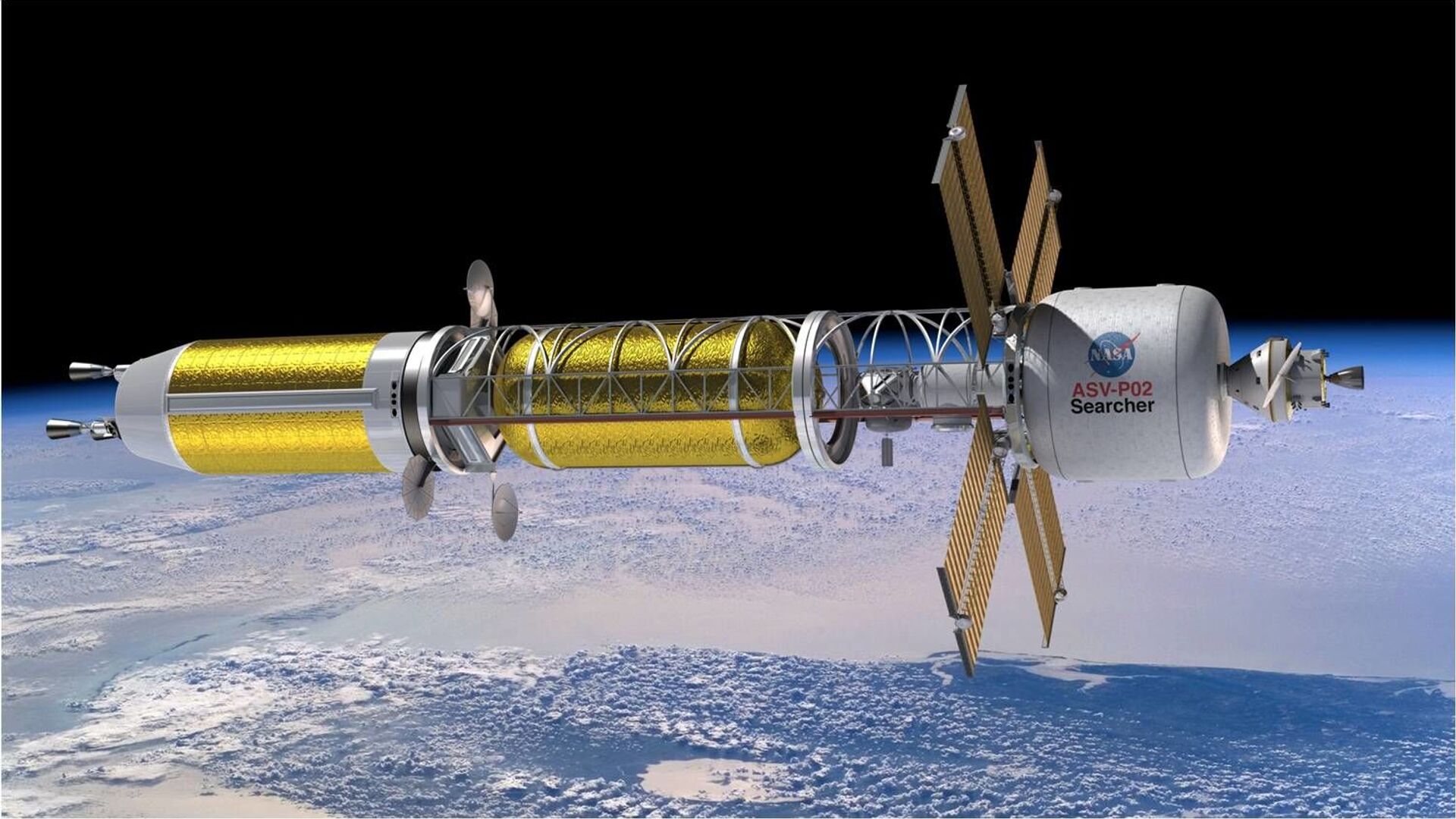https://sputnikglobe.com/20220529/pentagon-looks-to-unveil-new-nuclear-power-systems-in-space-by-2027-1095863877.html
Pentagon Looks to Unveil New Nuclear Power Systems in Space by 2027
Pentagon Looks to Unveil New Nuclear Power Systems in Space by 2027
Sputnik International
The Defense Advanced Research Projects Agency (DARPA) has announced it will be working on a project to design, develop and assemble a nuclear thermal rocket... 29.05.2022, Sputnik International
2022-05-29T18:47+0000
2022-05-29T18:47+0000
2023-04-13T12:44+0000
us
nuclear power
science & tech
space
pentagon
https://cdn1.img.sputnikglobe.com/img/107840/37/1078403764_0:1:1502:846_1920x0_80_0_0_59462cb5565d073fea2577794088815d.jpg
The Defense Innovation Unit (DIU) has said that it is working on two approaches to accelerate ground and flight testing for nuclear-powered prototypes, and is looking to demonstrate new nuclear power systems in space by 2027. The unit said it has greenlit two contracts to date, "one to the Ultra Safe Nuclear and a second to Avalanche Energy to demonstrate the next generation of nuclear propulsion and power capability for spacecraft." The companies will introduce solutions to grant small spacecraft the ability to manoeuvre at will in cislunar space and enable high-power payloads to support the Pentagon's space missions. Ultra Safe Nuclear is working on developing a nuclear radioisotope battery that will be able to "scale to 10x higher power levels, compared to plutonium systems, and provide more than 1 million kilowatt hours (kWh) of energy in just a few kilograms of fuel." Avalanche Energy, in turn, has come up with a device called an “Orbitron,” which "utilizes electrostatic fields to trap fusion ions in conjunction with a magnetron electron confinement scheme to overcome charge density limits." The DIU's initiative comes on the heels of DARPA's announcement that it is working to design a nuclear thermal rocket engine, setting the goal for a flight demonstration in 2026.
Sputnik International
feedback@sputniknews.com
+74956456601
MIA „Rossiya Segodnya“
2022
Sputnik International
feedback@sputniknews.com
+74956456601
MIA „Rossiya Segodnya“
News
en_EN
Sputnik International
feedback@sputniknews.com
+74956456601
MIA „Rossiya Segodnya“
Sputnik International
feedback@sputniknews.com
+74956456601
MIA „Rossiya Segodnya“
us, nuclear power, science & tech, space, pentagon
us, nuclear power, science & tech, space, pentagon
Pentagon Looks to Unveil New Nuclear Power Systems in Space by 2027
18:47 GMT 29.05.2022 (Updated: 12:44 GMT 13.04.2023) The Defense Advanced Research Projects Agency (DARPA) has announced it will be working on a project to design, develop and assemble a nuclear thermal rocket engine and launch it into the Earth's orbit by 2026.
The Defense Innovation Unit (DIU) has said that it is working on two approaches to accelerate ground and flight testing for nuclear-powered prototypes, and is looking to demonstrate new nuclear power systems in space by 2027.
The unit said it has greenlit two contracts to date, "one to the Ultra Safe Nuclear and a second to Avalanche Energy to demonstrate the next generation of nuclear propulsion and power capability for spacecraft."
The companies will introduce solutions to grant small spacecraft the ability to manoeuvre at will in cislunar space and enable high-power payloads to support the Pentagon's space missions.
"DIU expects that its NAPP program will have a direct impact on how the U.S. employs space power, ushering in an era where spacecraft can manoeuvre tactically in cislunar space," the unit said in a statement.
Ultra Safe Nuclear is working on developing a nuclear radioisotope battery that will be able to "scale to 10x higher power levels, compared to plutonium systems, and provide more than 1 million kilowatt hours (kWh) of energy in just a few kilograms of fuel."
Avalanche Energy, in turn, has come up with a device called an “Orbitron,” which "utilizes electrostatic fields to trap fusion ions in conjunction with a magnetron electron confinement scheme to overcome charge density limits."
The DIU's initiative comes on the heels of DARPA's announcement that it is working to design a nuclear thermal rocket engine, setting the goal for a flight demonstration in 2026.

